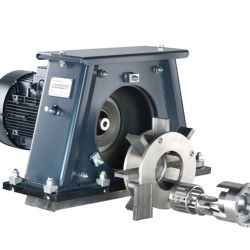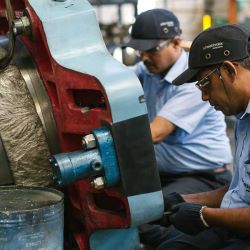In the unit, used abrasive passes through a sieve tray which catches any uncommonly large fines, to the Abrasive silo/Airwash separator which cleans the abrasive for reuse.
Option for Medium Applications
For improved abrasive cleansing, e.g. separation of aluminium flashes, a vibro sieve can be installed between the reclamation unit and abrasive silo.
Option for Foundry/Heavy/Sand Applications
A Vibro conveyor can replace the screw conveyor, this provides an initial cleansing/separating of sand and heavy contaminants from the used abrasive. The conveyor would ideally be installed with the optional Magnetic separator to remove sand in order to prolong the life of the machine. The abrasive then goes to the Airwash separator as before.
Power & Free Conveyor
Power & Free conveyors are characterised by two rails lying on top of each other: a drawing chain runs in the upper rail, the transport device is suspended in the lower rail. The Power & Free conveyor provides high flexibility in the linking of different production processes.
Due to its robustness, the Power & Free conveyor used by Wheelabrator is especially suitable for applications with particular strains like high dust content and high temperatures.
In operation, the Power & Free system can automate the transport process of the pass-through monorail shot blast machine, and connect it to the superior production control – for example, by integrating the blast machine between a die cutter and a crack detector. In isolated systems, the operator starts a preselected number of transport devices to be automatically processed.


